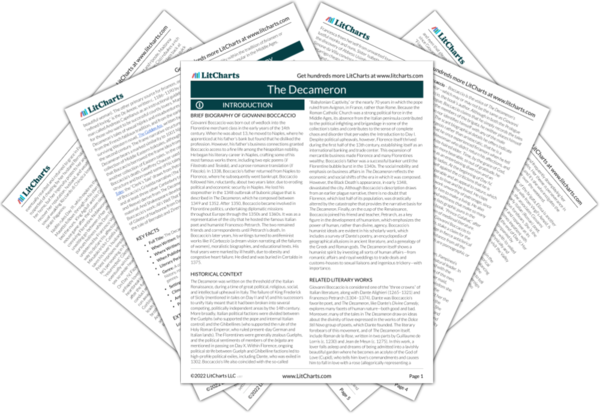Boccaccio also maintains the fiction that these aren’t his stories but rather the tales told by the members of the
brigata (even though he never places himself in the group or explains how he was able to overhear them). But this serves to further distance him from any criticism, since it in effect claims that the tales aren’t really his. Designing the work for ladies with leisure time has both gender and class implications: as he mentioned in the Prologue, women suffer more from the pain of unrequited love because they don’t have the ability to go out and engage in distracting activities. And the women with leisure to read a book like
The Decameron—Boccaccio’s target audience—are aristocratic ladies who don’t need to earn their own living.
